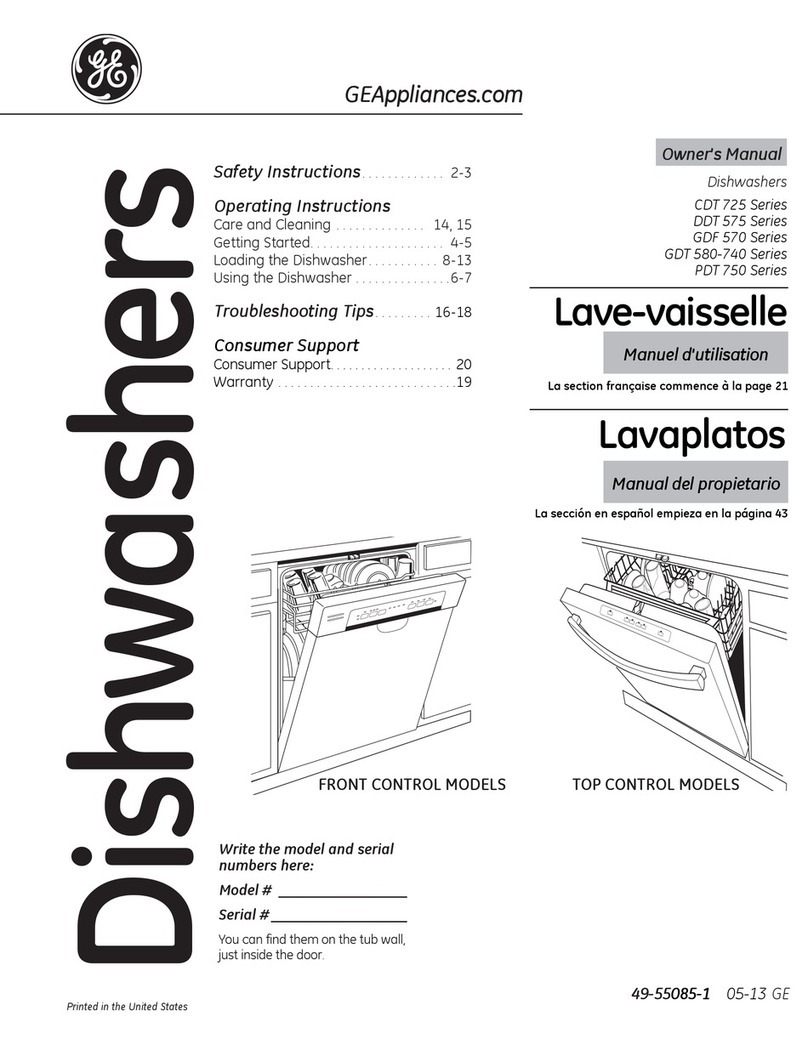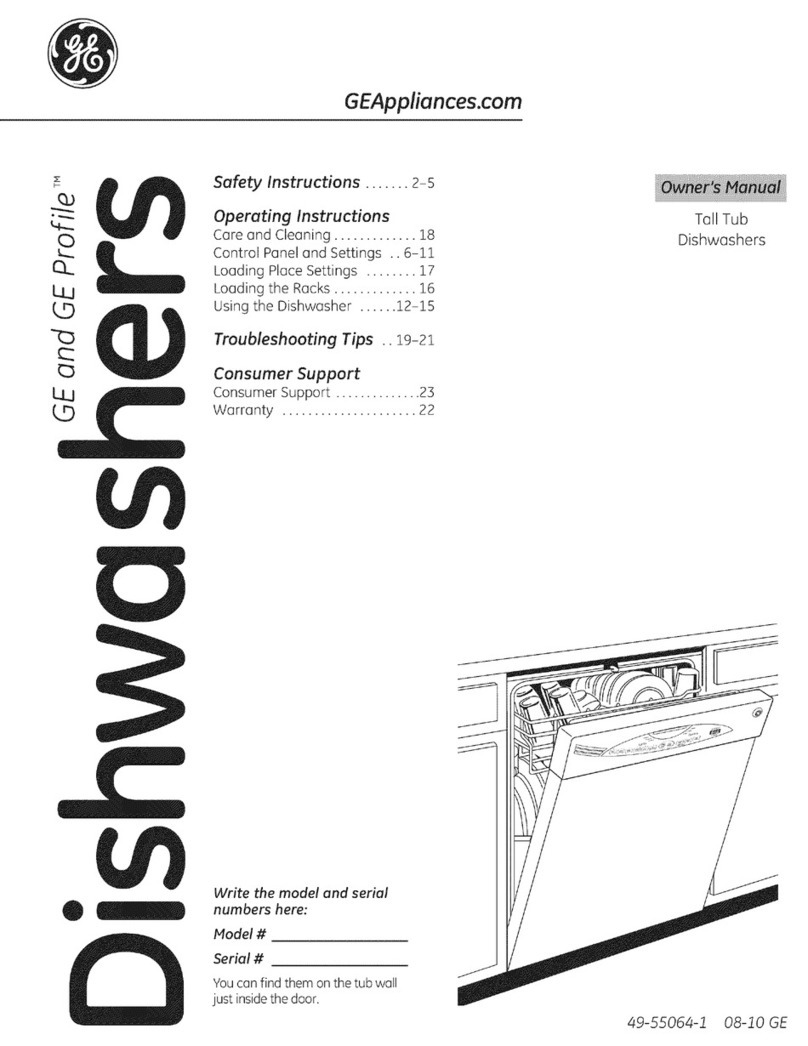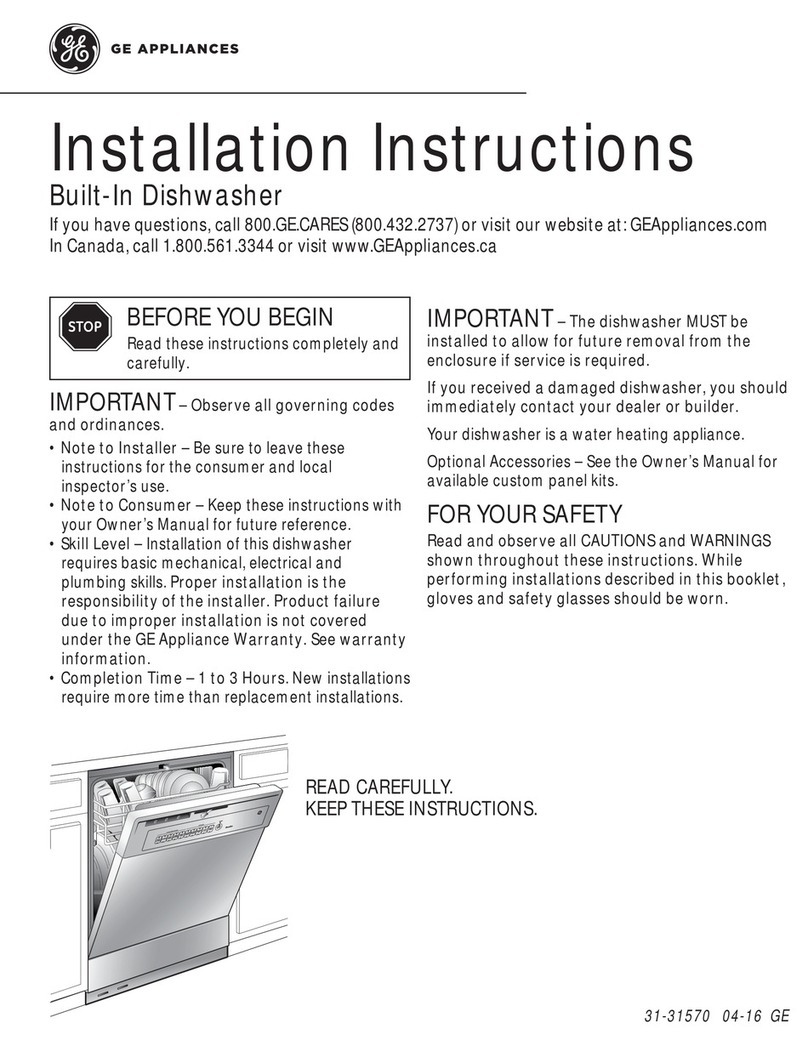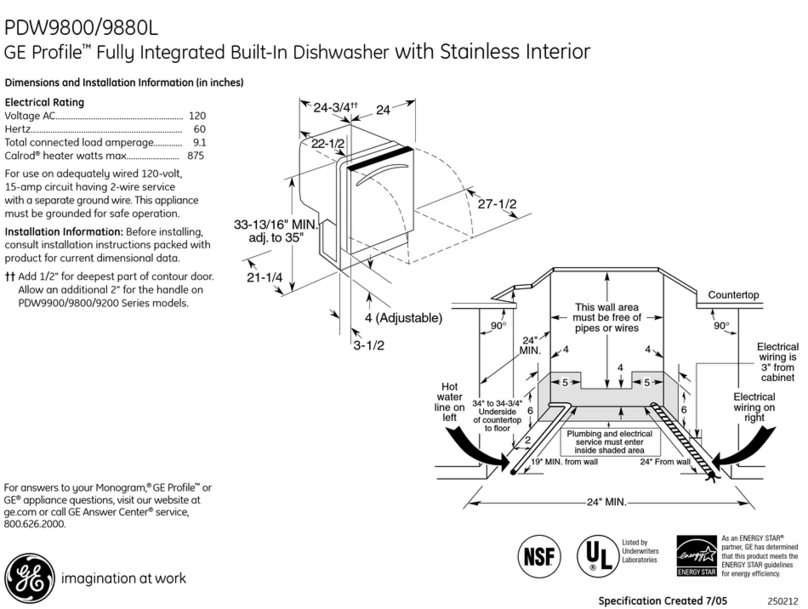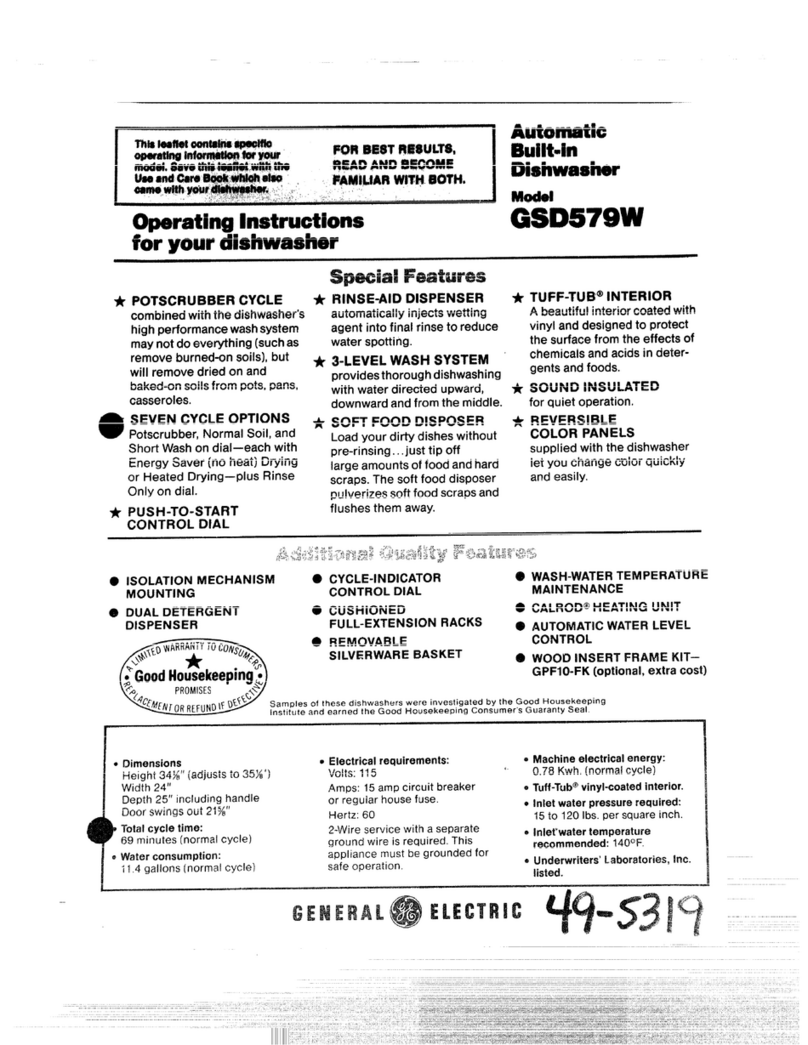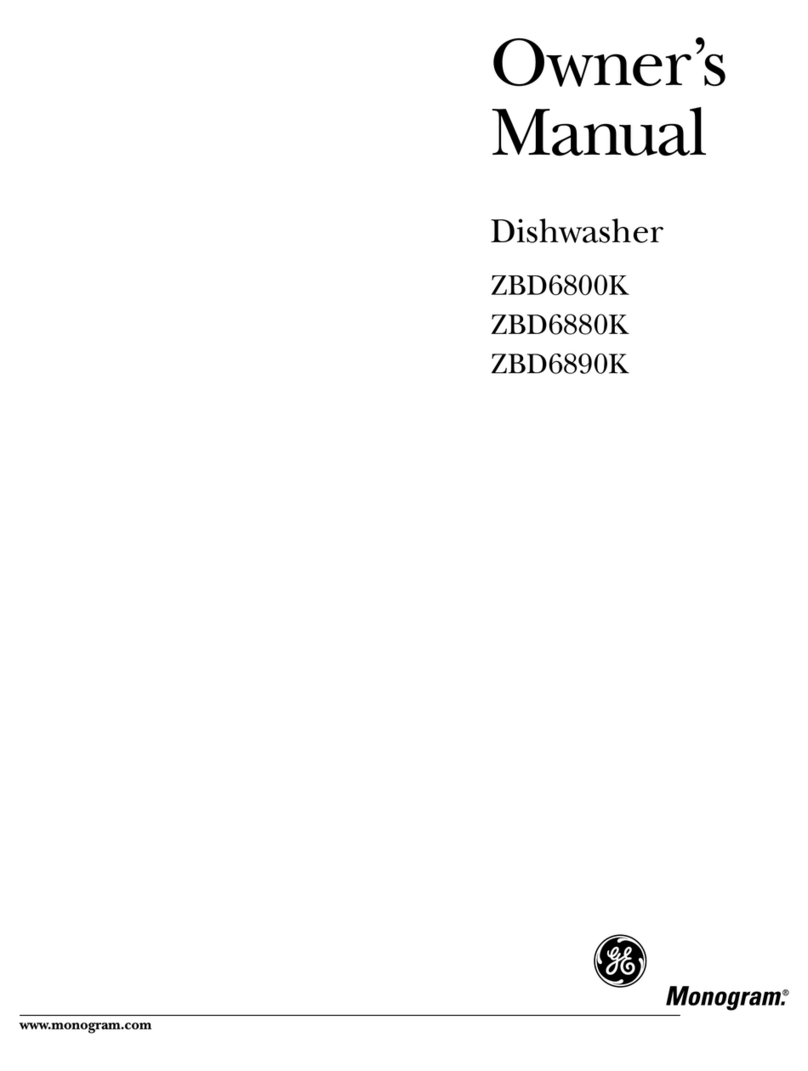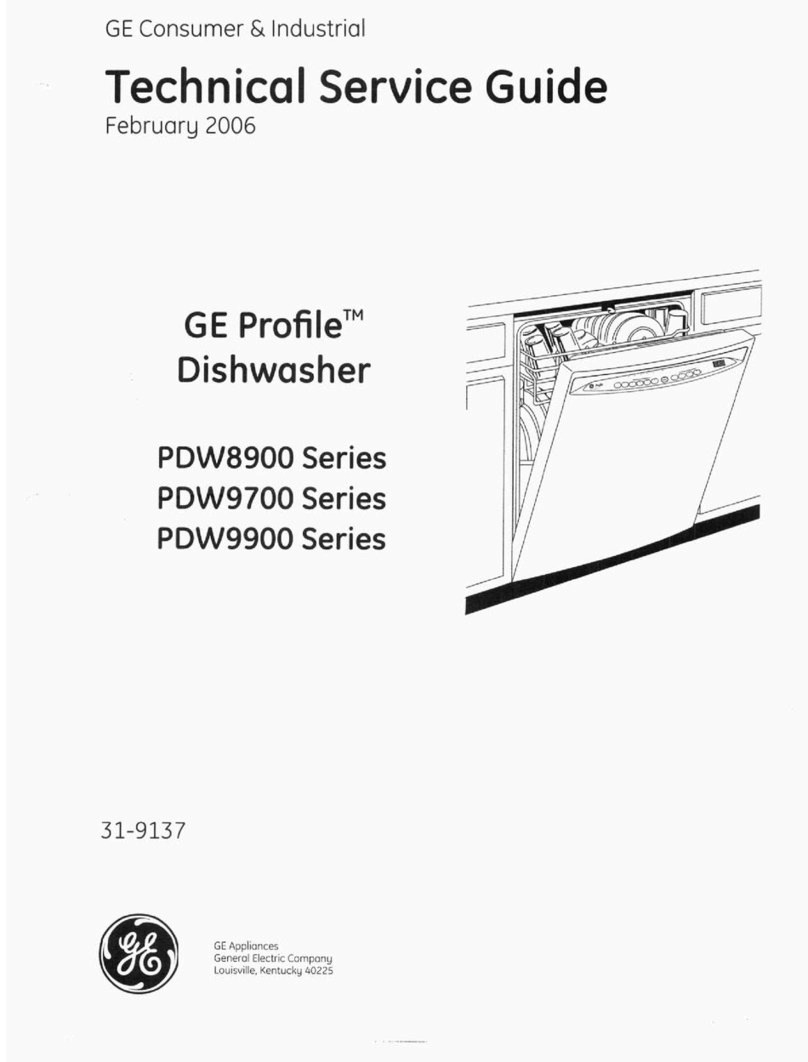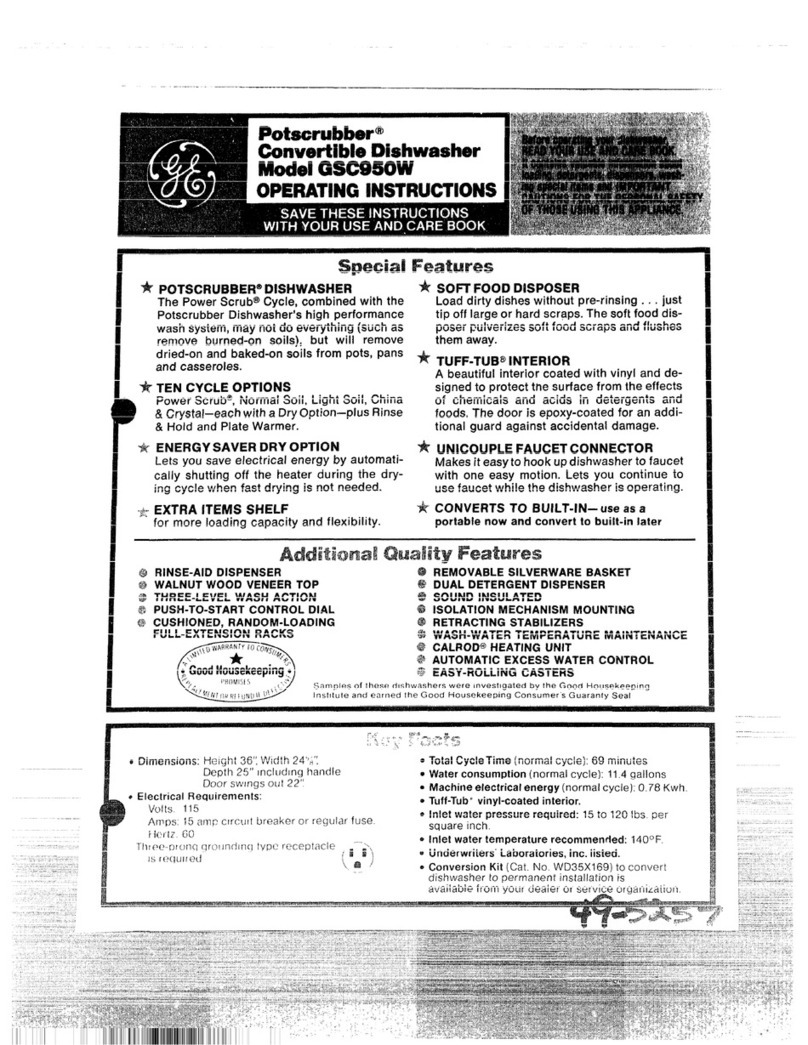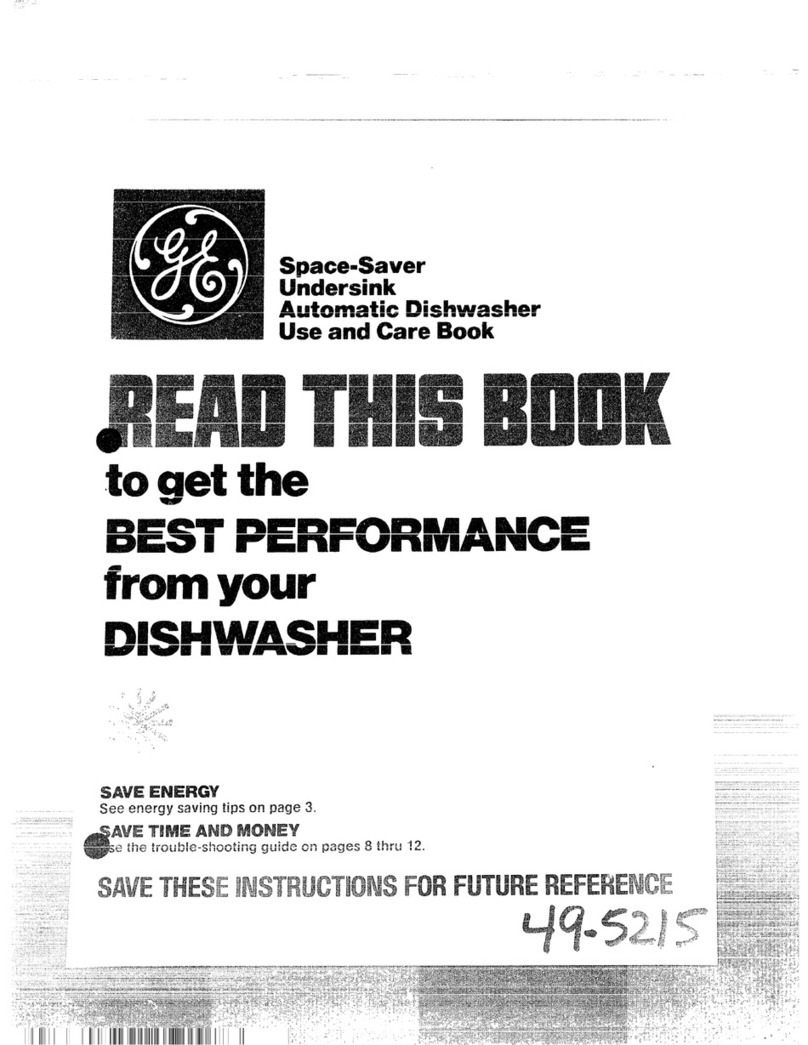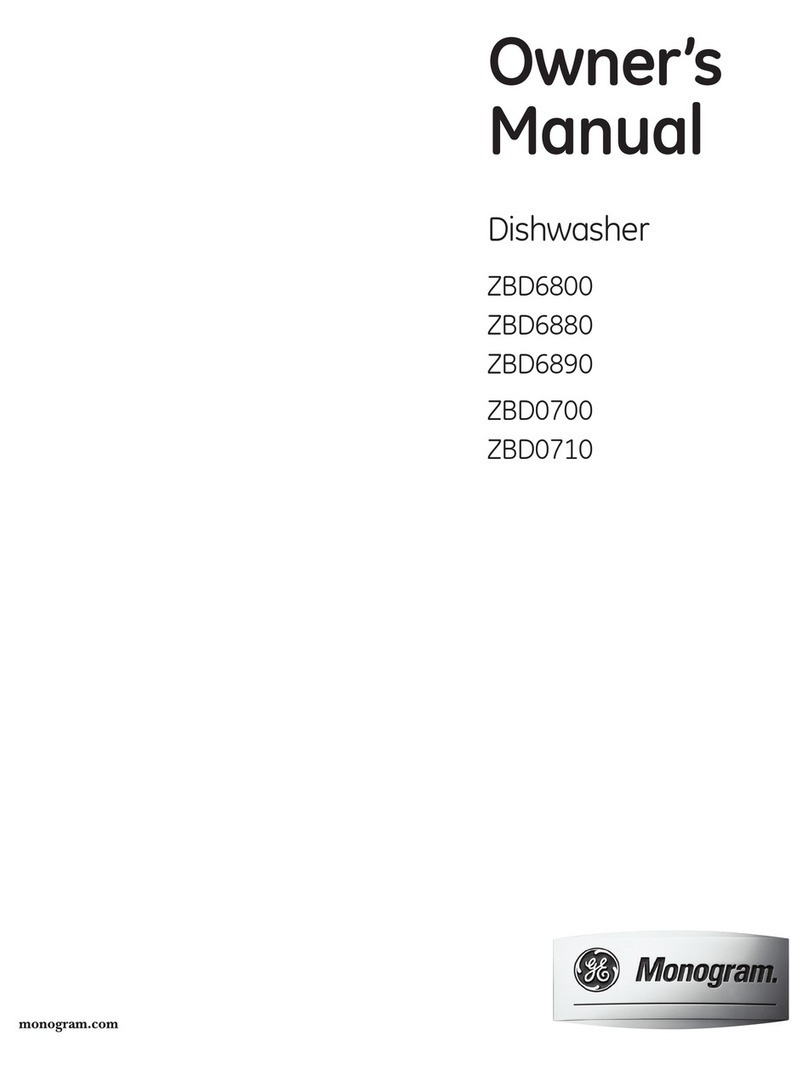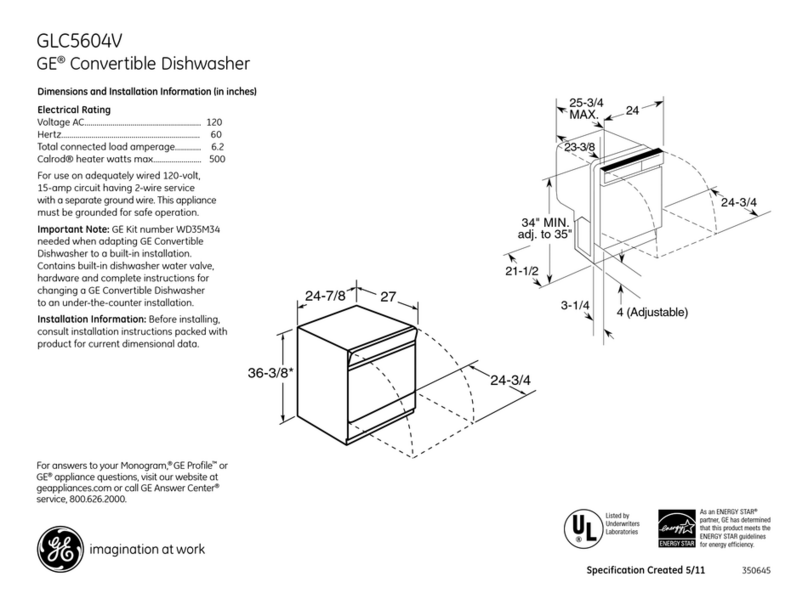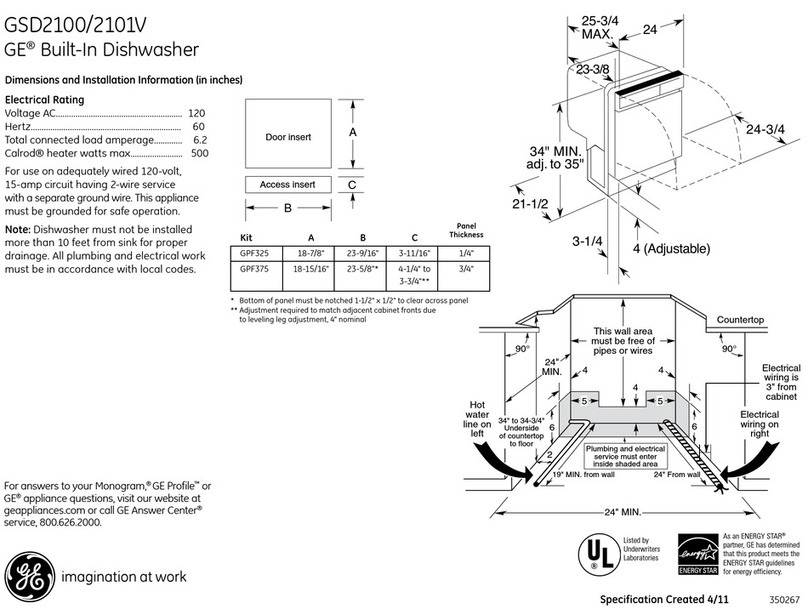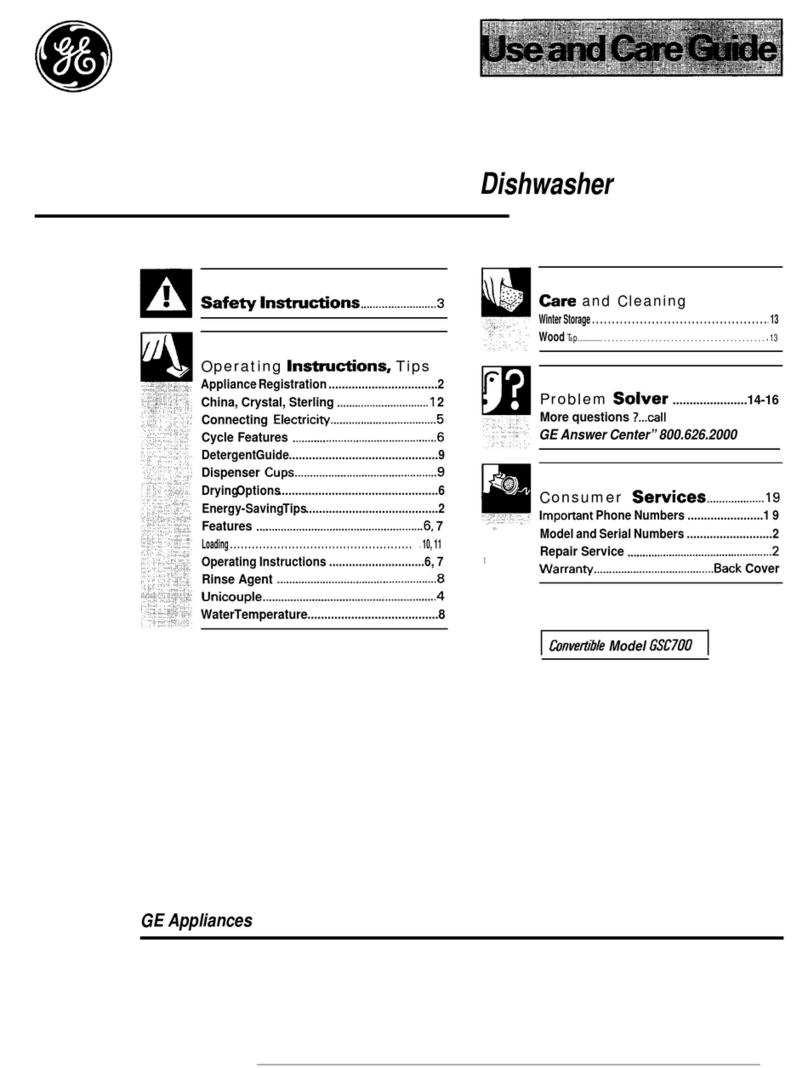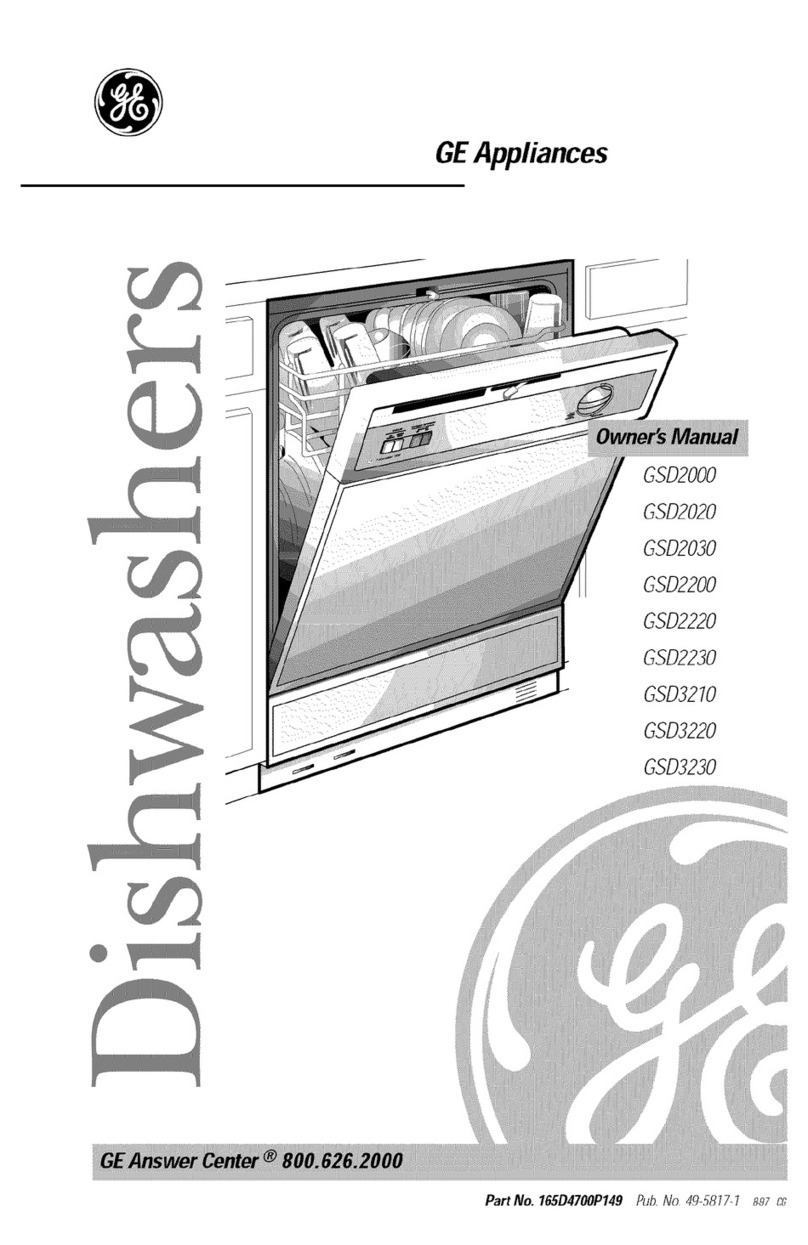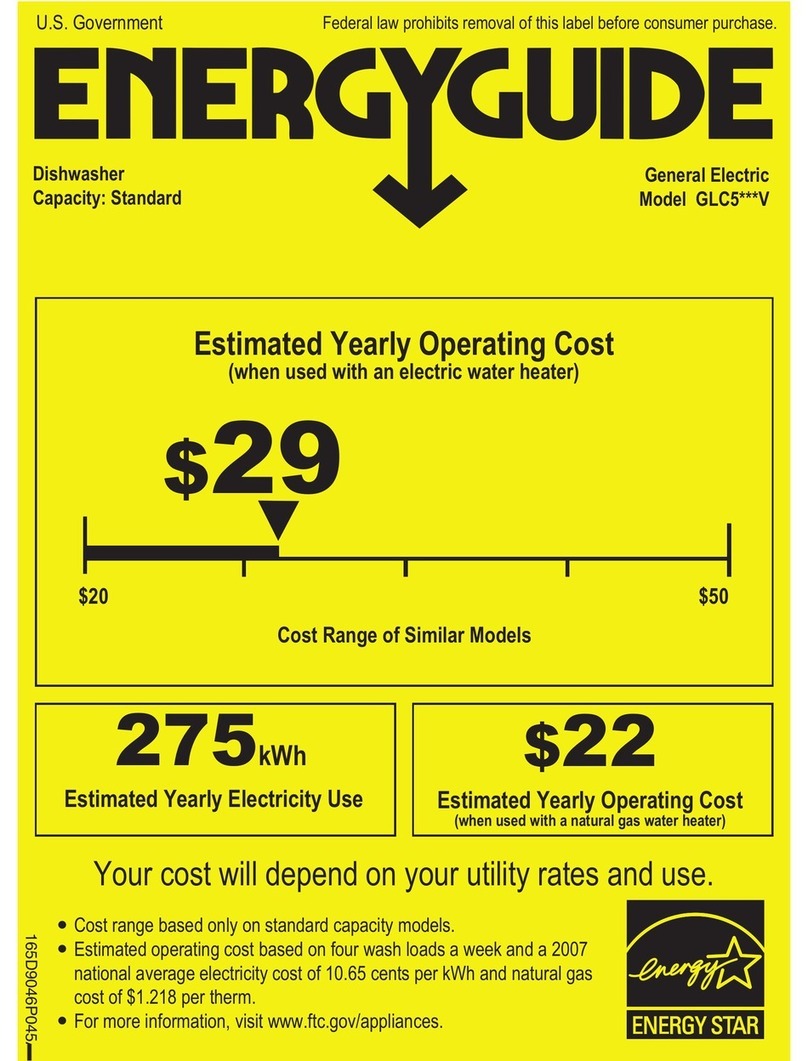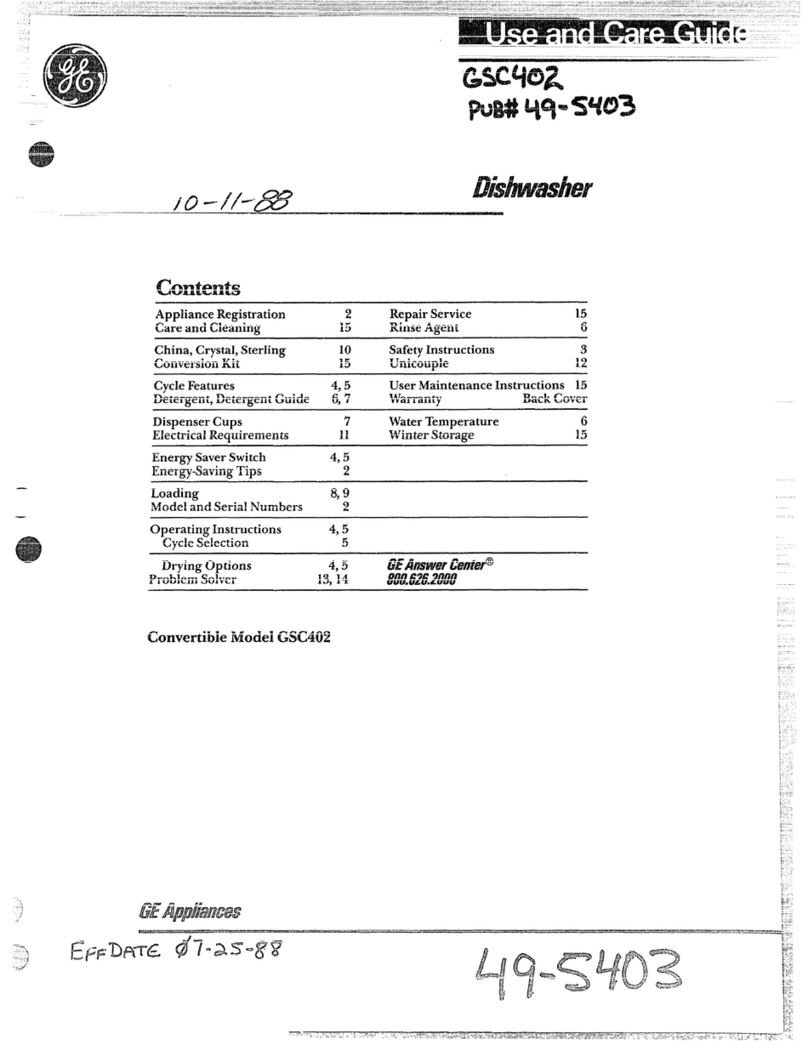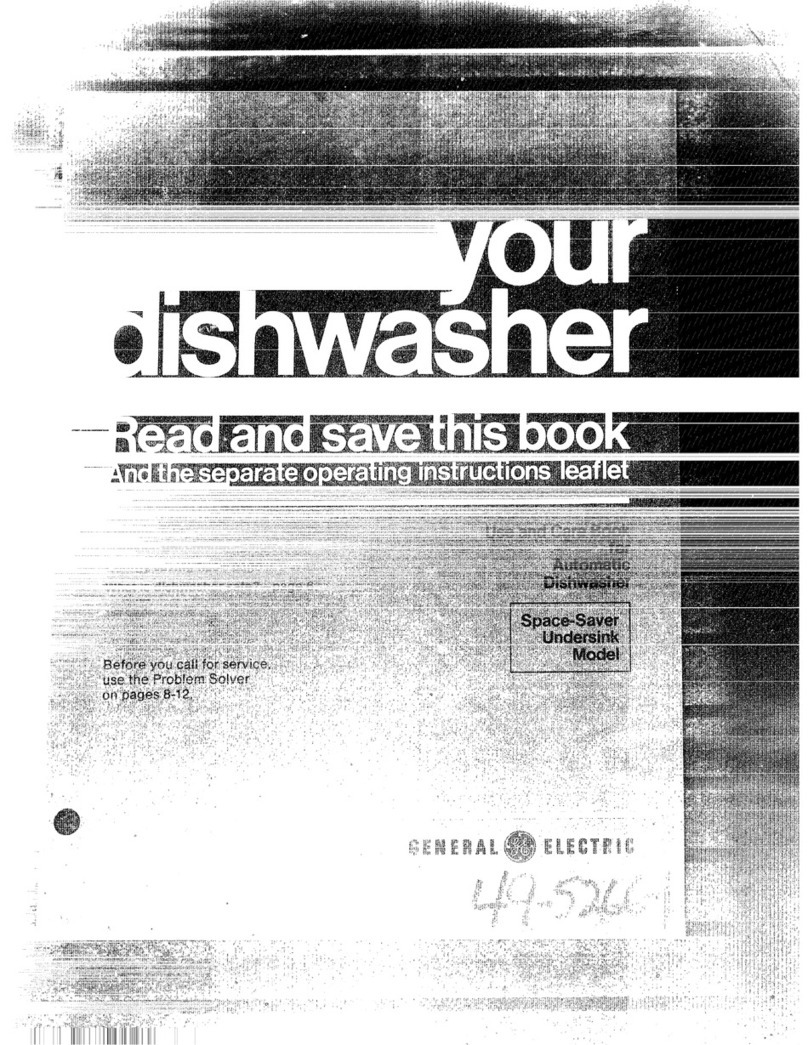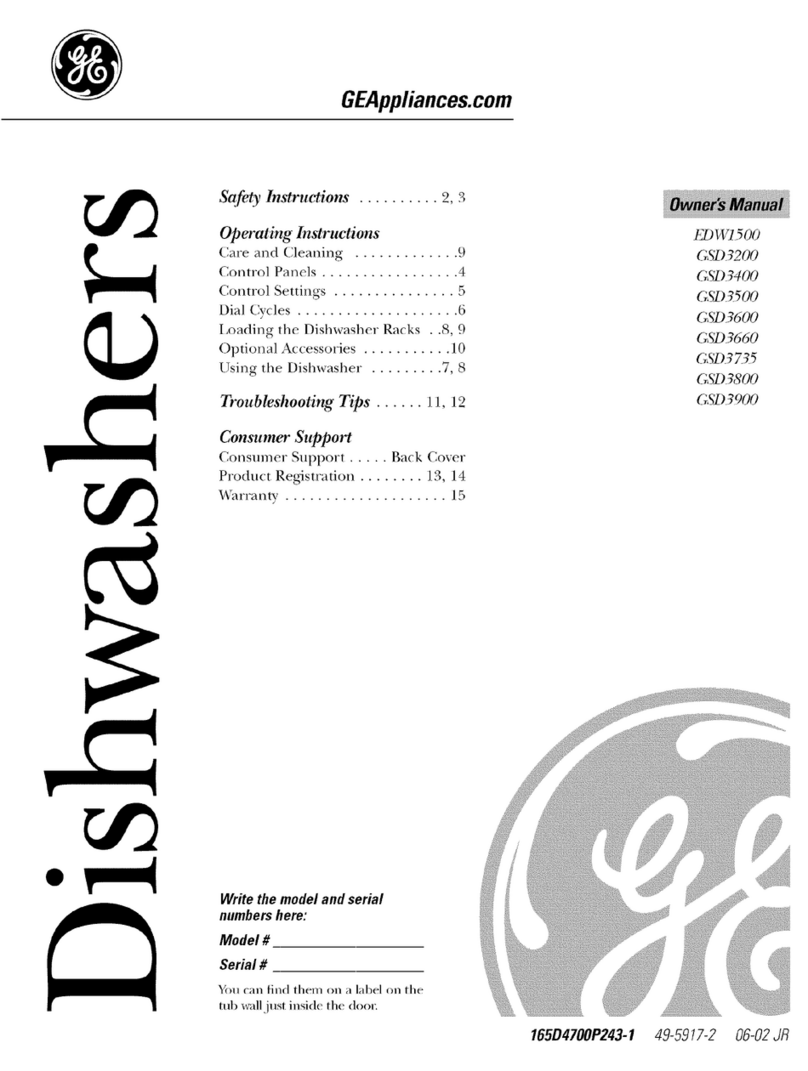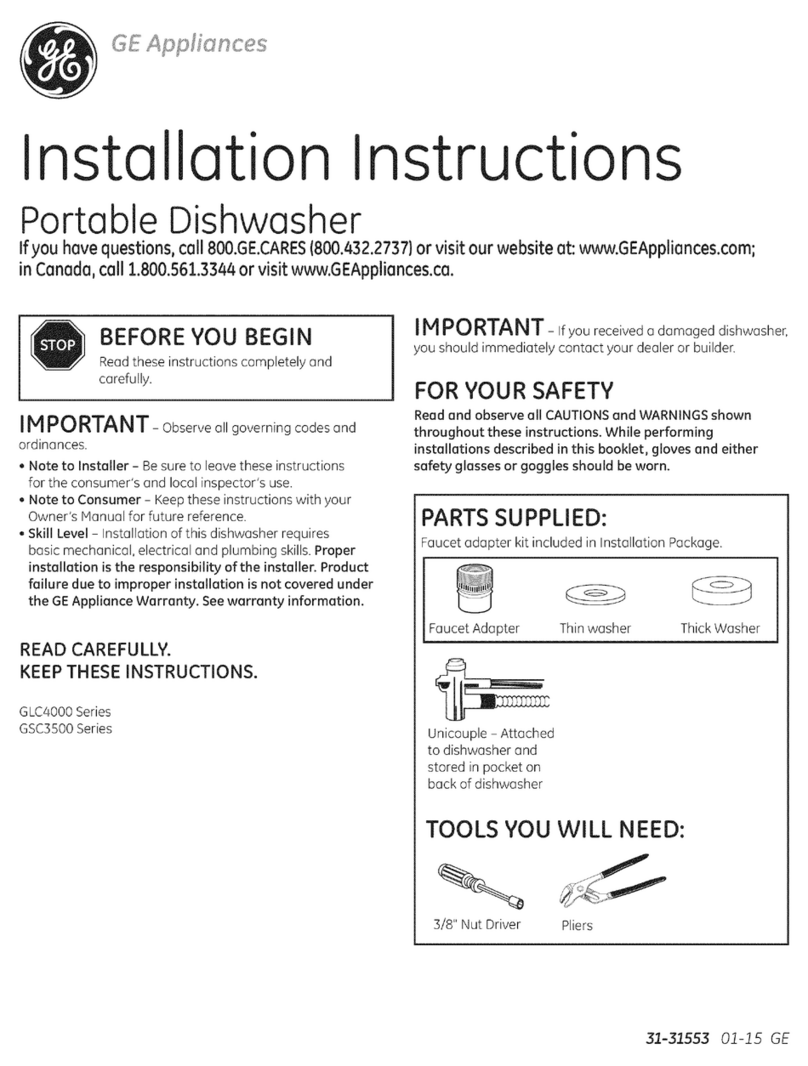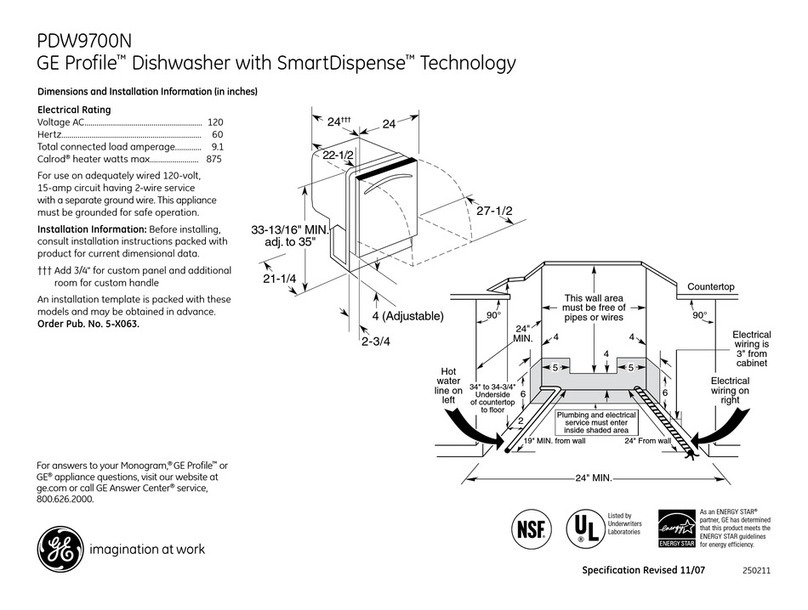lkmperature SensorSystem
Toget dishes clean and dry you
need hot water. Tohelp you get
water ofthe proper temperature,
your dishwasher has awater heating
feature that automatically senses
the temperature of the water in the
washcycleand heats it, if necessary,
to the proper temperature. This
water heating feature may allow
you to turndown your household
water heater and saveenergy if
you’rewilling to let the dishwasher
run alittle longer while it heats
water to the proper temperature.
For good washing and drying, the
entering water must beat least
120*F.Toprevent dish damage,
inlet water should not exceed 150*F.
How to test water temperature:
Check your water temperature
inside your dishwasher with a
candy or meat thermometer.
Let the dishwasher run through
one fill and pump out cycle, then
let the dishwasher fill with water
the second time.
When you hear the water stop
filling, unlatch the door and slowly
open it.
Measure the temperature of the
water in the bottom of the tub this
way:
Removethe silverware basket and
place acandy or meat thermometer
in the watertowards the middle of
the tub. If the temperature is less
than 120*F,you will not get good
washing results. Higher water
temperature is needed to dissolve
grease and activate powder
detergents.
Helpful hints: If outside
temperatures are unusually low,or
if your water travels along distance
from water heater to dishwasher,
you may need to set your water
heater’s thermostat up. If you have
not used hot water for some time,
the water in the pipes will be cold.
‘Ihm on the hot water faucet at the
sink and allow it to run until the
water is hot. Then start the
dishwasher. If you’verecently done
laundry or run hot water for
showers, give your water heater
time to recover before operating the
dishwasher.
Toimprove washability if the water
is less than 120*Fand you cannot
adjust your water heater: Select a
longer cycleand fill both detergent
cups at least half-full with detergent.
Howto use arinse agent.
Arinse agent makes water flow
off dishes quicker than usual. This
lessens water spotting and makes
drying faster, too.
For best dishwashing performance,
use of arinse agent such as JET-
DRYbrand is recommended.
Rinse agents come in either liquid
or solid form. Yourdishwasher’s
dispenser uses the liquid form.
How to fill the rinse agent
dispenser. Unscrew the cap. Add
the liquid rinse agent until itjust
reaches the bottom ofthe lip inside
the dispenser opening. Replace the
cap. The dispenser automatically
releases the rinse agent into the
final rinse water.
If you accidentally spill: Wipe
up the rinse agent with adamp
cloth. Don’t leavethe spill in the
dishwasher. It can keep your
detergent from working.
If you can’t find any rinse agent,
write:
BENCKISER CONSUMER
PRODU~S, INC.
(“JET DRY”)
411 W. Putnam Ave.
Greenwich, CI’ 06830
10
0
II/1
Yourdishwasher’s rinse agent
container holds 4% ounces. This
should last about 3months. Fill
as needed. Do not overfill.
Howto choose and use
detergent.
First,
use only powderor liquid
detergentsspecifically made for
use in dishwashers. Other types
will cause oversudsing.
Second, check the phosphate
content. Phosphate helps prevent $
hard-water materials from forming
spots or film on your dishes. If
your water is hard (7 grains or
more), your detergent has to work
harder. Detergents with ahigher
phosphate level will probably work
better. If the phosphate content is
low (8.7%or less), you’ll have to
use extra detergent with hard water.
Yourwater department can tell
you how hard your water is. So
can your county extension agent.
Or your area’swater softener
company. Just call and ask them
how many “grains of hardness”
there are in your water.
How much detergent should you
use? That depends. Is your water
“hard” or “soft”? With hard water,
you need extra detergent to get
dishes clean. With soft water, you
need less detergent.
Toomuch detergent with sofi water
not only wastes money, it can be
harmful. It can cause apermanent e
cloudiness of glassware, called
“etching.” An outside layer of glass
is etched away!Of course, this
takes some time. But why take a
chance when it’seasy to find out
the hardness of your water.

